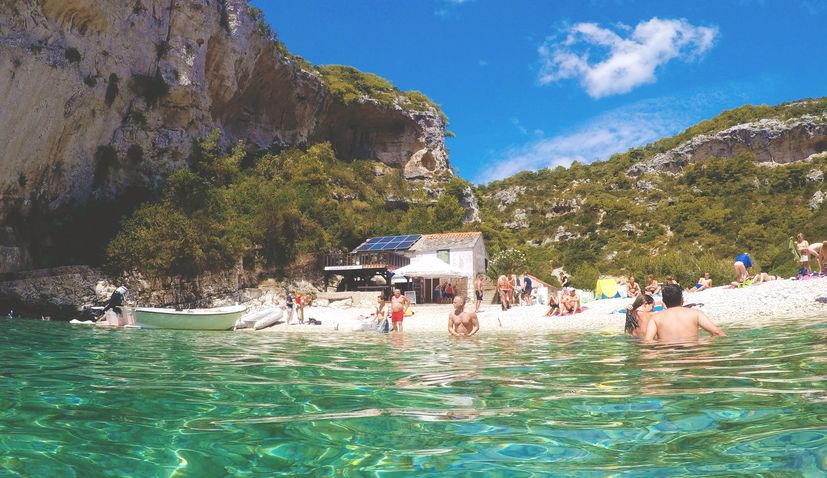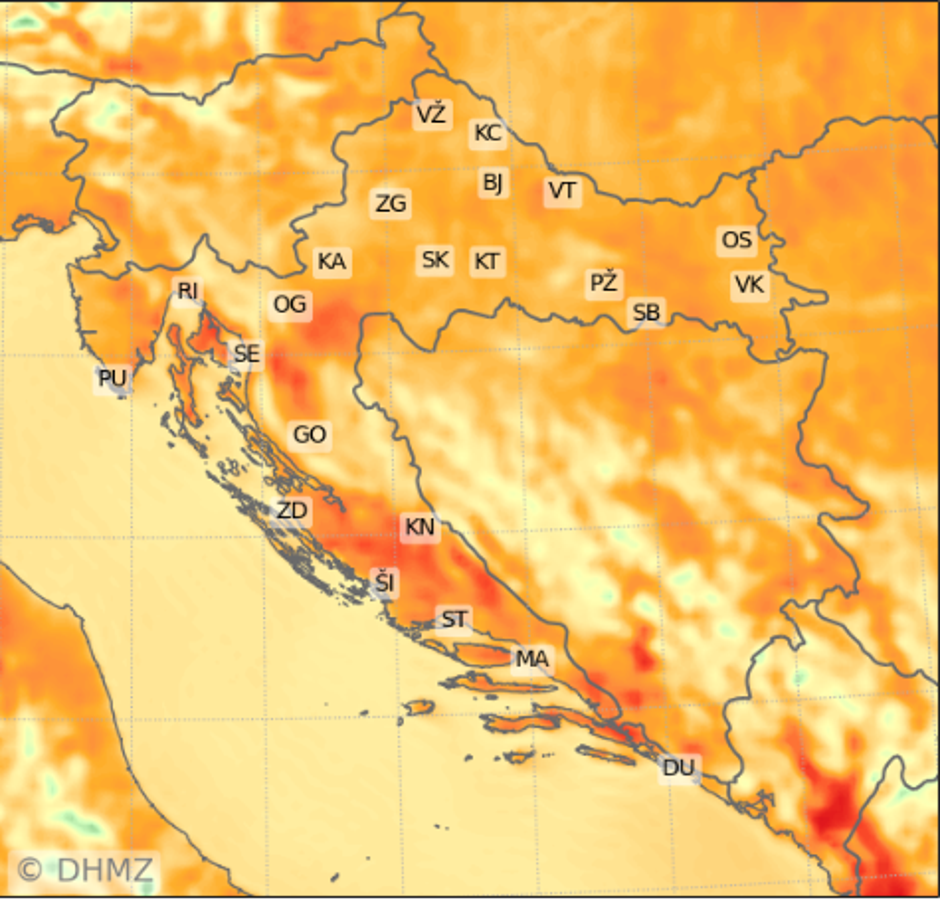by croatiaweek
August 8, 2025
in

Croatia
Croatia is set to experience an intense heatwave starting tomorrow, with temperatures expected to peak early next week.
The Croatian Meteorological and Hydrological Service (DHMZ) has issued weather alerts for most of the country, including the highest red warning for Sunday and Monday in certain regions.
In the Rijeka area, temperatures are forecast to exceed 36 degrees as early as Sunday. Knin will see similar conditions, with the possibility of reaching 40 degrees in inland areas at the start of next week.
Meteorologist Zoran Vakula has warned that such extreme heat in mid August is unusual and could have serious effects on public health.
Alongside the high temperatures, strong bora winds are expected in the northern Adriatic early next week, which may disrupt traffic.
Dalmatia will continue to experience sweltering days and very warm nights, with potential for new temperature records, particularly on the Feast of St Lawrence.
Saturday will bring increasing heat across Slavonia, Baranja and Srijem, with highs around 35 degrees. Central Croatia will see similar conditions with light winds. In the northern Adriatic and Gorski Kotar, daytime highs will also approach 35 degrees, accompanied by occasional moderate maestral winds.

(Photo: DHMZ)
Public Health Warning
The Croatian Institute of Public Health (HZJZ) has issued special advice due to the seriousness of the upcoming heat.
Authorities note that prolonged heatwaves have been linked to increased mortality across Europe, including in Croatia. Older people over 65 and those with chronic illnesses, particularly cardiovascular problems, are most at risk.
People are urged to avoid direct sun exposure between 10am and 5pm and to drink plenty of fluids. Drinks containing caffeine, alcohol or sugar should be avoided, as should carbonated beverages.
Light meals with plenty of fresh fruit and vegetables are recommended, along with smaller portions more frequently throughout the day.
Those working outdoors should take frequent breaks and drink at least one and a half glasses of water every half hour. Indoors, it is advisable to keep windows closed and blinds lowered in rooms exposed to the sun, and to switch off unnecessary electrical devices.
If using air conditioning, the indoor temperature should not be excessively low, and the difference between inside and outside should not exceed seven degrees.
Doctors are warning of the danger of heatstroke, a serious and potentially life threatening condition in which the body can no longer regulate its temperature.
There are two main types – the classic form, more common in older and less mobile individuals, and exertional heatstroke, which affects healthy and active people such as athletes and outdoor workers. Both require urgent medical attention.
